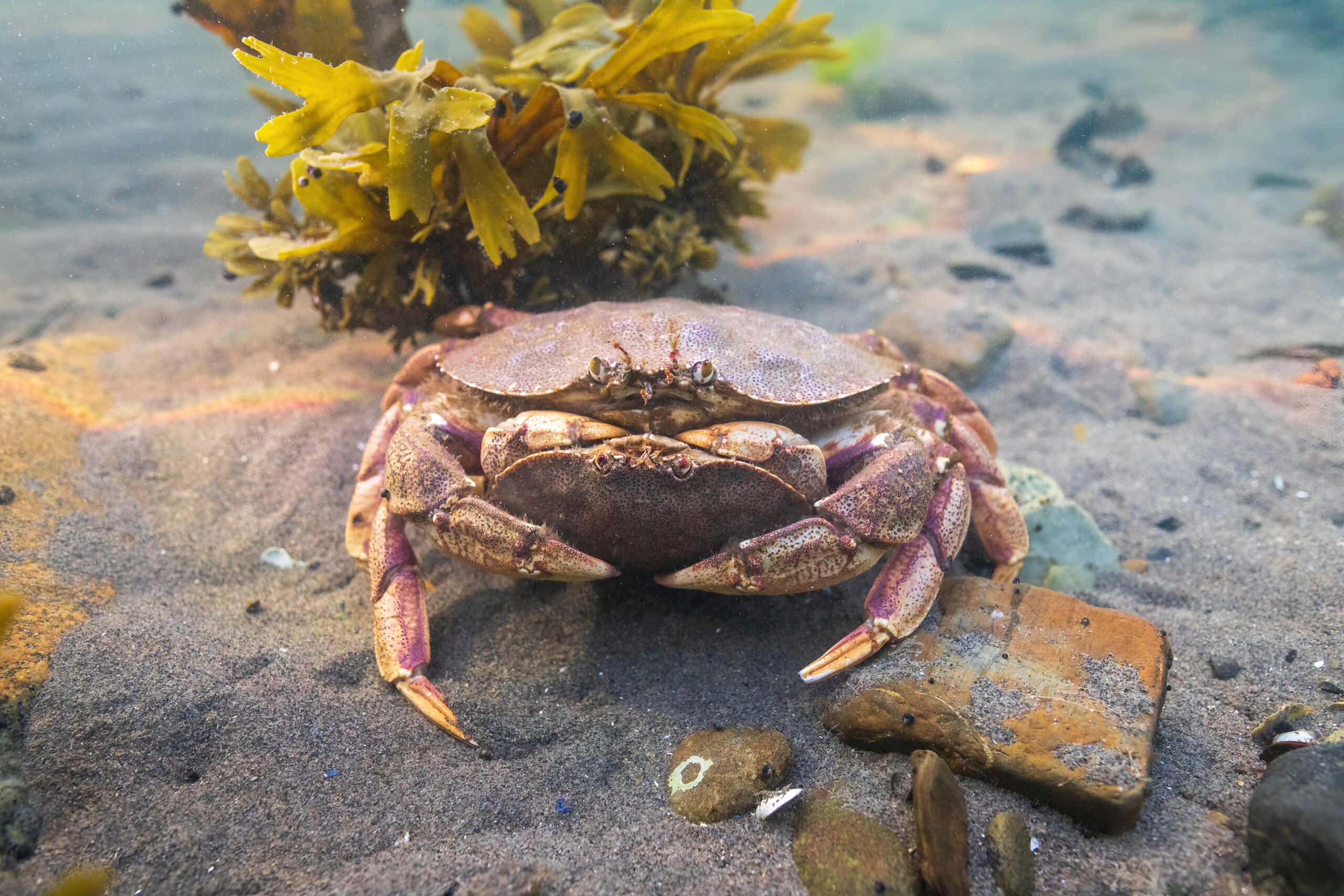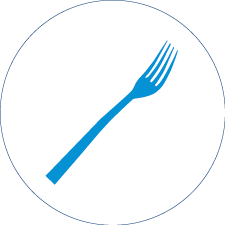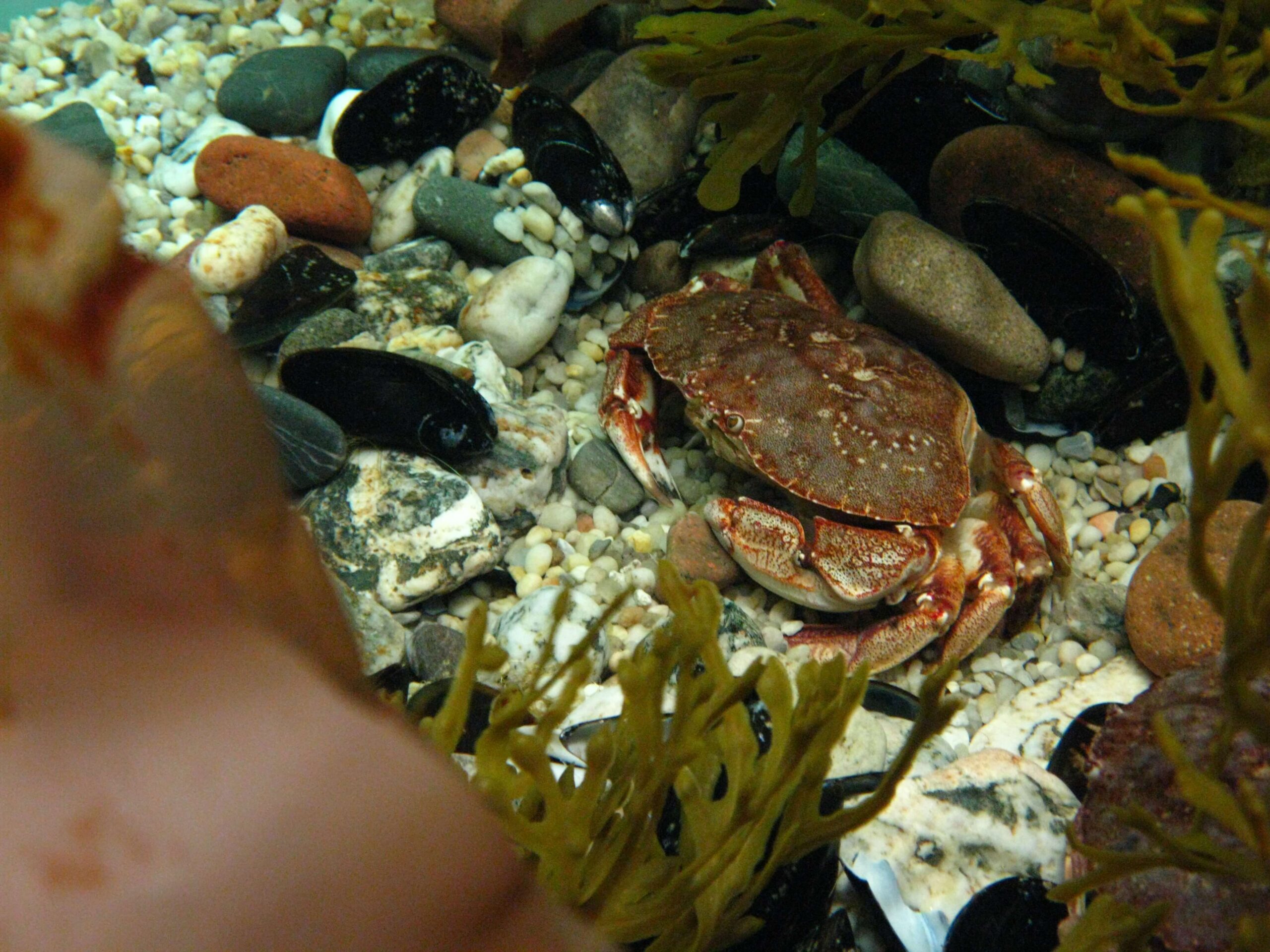
SIZE:
10 cm for females, 14 cm for males.
LIFE EXPECTANCY:
Approximately 7 years.
LIFE CYCLE:
Sexual maturity is reached when males are 7 cm and 6 cm for females.
Reproduction occurs in autumn. Females lay thousands of eggs, which they carry at the level of their abdomen for a period of approximately 10 months (up to 500,000 eggs for a 9 cm female).
The following summer, after 10 months, the eggs hatch and the larvae remain in the water column. In September, they become tiny crabs and move to shallow depths. Crabs grow through moulting, which starts at the larval stage.

During reproduction, males keep the females close.
Credit: Jean-Christophe Lemay, photo taken in Rimouski in 2021.
The Atlantic rock crab has an oval, flattened shell. It is yellowish and covered with brick red spots. After moulting, the shell will take two to three months to harden. It has a border with nine undulations on both sides of the head. Atlantic rock crabs have four pairs of locomotor legs that can grow back after each moulting if they have been cut or torn off. They also have a pair of short, large claws for eating and protection.
On the seabed, between 0 and 575 m depth.
Juvenile crabs stay close to the shore on a rocky substrate. Adults will hide in deeper zones.
PREYS:
Waved whelks
Deep sea scallops
Green sea urchins
Organic matter
Crabs help to clean the oceans. They eat animal cadavers and dead plants.
PREDATORS:
Lobsters
Seabirds
MACHINES:
Traps.
REGULATIONS:
Fishing effort:
- Limited number of permits
- Regulated number and size of traps
- Specified fishing season
- Legal minimum size: shells must be at least 10.2 cm (which excludes females)

In Québec, fishing for Atlantic rock crab started in 1988. However, it is still rarely seen on our tables, as it is mainly exported.
Credit: Yves Persoons, photo taken at Sainte-Anne-des-Monts in 2022.
Atlantic rock crab is a Smarter seafood-listed species.
BENEFITS:
Rich in protein, zinc, copper and vitamin B12, which all enhance red blood cell production.
LET’S COOK:
Its meat is refined and slightly sweet, somewhere between the taste of snow crab and lobster.
It can be enjoyed in crab cakes, in a broth or in cooler recipes such as salads and spring rolls.
Must be consumed the same day.
Frozen, it will keep for one month, after which it loses its flavour.
OUR CULINARY ADVICE:
- If you buy it fresh, make sure it is reactive; i.e. no hanging legs in a lethargic state.
- If bought cooked, make sure it has a bright orange colour and is slightly moist.
Some publicity
In 2021, “Opération crabe” was launched by the Table Ronde and Fourchette bleue group to make this product easier to find in Québec restaurants.






